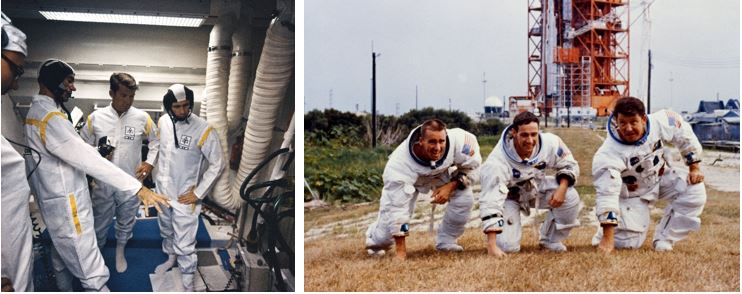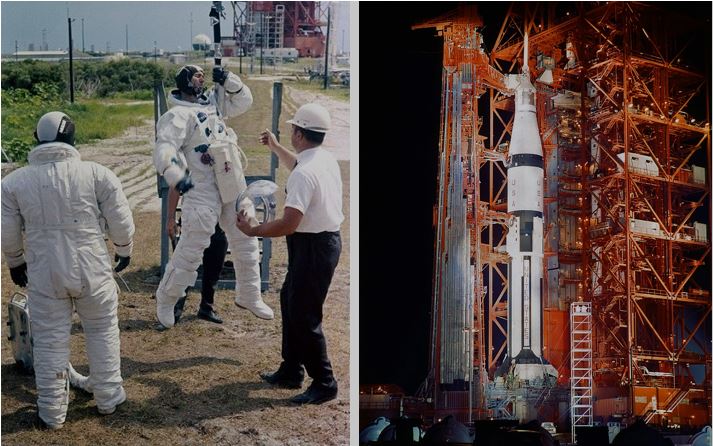The October 11, 1968, launch of Apollo 7, the first mission in nearly two years to take Americans into space, was one month away. The prime crew, Walter M. Schirra, R. Walter Cunningham and Donn F. Eisele, spent much of their time in simulators at Kennedy Space Center and at Cape Kennedy’s Launch Complex 34, where their spacecraft stood atop its Saturn 1B rocket. The mission was a test flight of the Apollo’s systems in Earth orbit to prepare for more ambitious missions leading up to the Moon landing. It was the first time astronauts launched on a Saturn rocket. The flight was designated as open-ended depending on its progress in orbit but was expected to last 10.8 days, long enough to prove the spacecraft’s ability to carry out a lunar mission.
Following assembly of the rocket and spacecraft at the pad, engineers conducted tests on the integrated launch vehicle. For many of the exercises, the rocket remained connected to the launch pad via electrical and hydraulic umbilicals. On September 4, engineers disconnected the umbilicals to conduct the “plugs out” test, putting the rocket and spacecraft on internal power, a significant milestone toward readying the vehicle, ground crews and astronauts for launch. During the assessment, Schirra, Cunningham and Eisele sat in the Command Module, with the spacecraft’s hatch remaining open. A problem during the transfer from external to internal power required part of the test to be rerun the next day, but overall managers expressed satisfaction with the results.
Five days after the plugs out test, the prime crew and their backups Thomas P. Stafford, Eugene A. Cernan and John W. Young participated in emergency egress drills from the Command Module. For this exercise, the crewmembers wore their pressure suits and emerged unassisted from the capsule as they would in an actual emergency late in the countdown. They rode elevators down to the base of the launch pad where they boarded armored personnel carriers to evacuate the area. Following the escape training, the crew practiced the final portion of an alternate means of evacuating the launch pad, using a slide wire to reach the safety of the ground. They simulated the trip down the slide wire from a 36-foot training tower near the pad. Back in August, ground personnel and support astronauts certified the method’s safety by completing the full 1,200-foot slide wire escape from the 215-foot level of the pad to the ground.
Another major milestone in preparation for the launch of Apollo 7 was the Countdown Demonstration Test (CDDT), a complete rehearsal of the actual countdown to exercise not only the launch team at KSC but also Mission Control at the Manned Spacecraft Center, now the Johnson Space Center, in Houston. For crew safety reasons, the CDDT was divided into two phases, a “wet” phase and a “dry” phase. The wet test encompassed the entire countdown, including fueling the rocket for the first time, but the astronauts did not board the spacecraft. Engineers then drained the fuel from the rocket, and the dry test picked up the count at about T-3 hours, shortly before the time of propellant loading. This time engineers only simulated the loading. The astronauts participated in the dry countdown wearing pressure suits, all the way to a simulated liftoff. The 6-day CDDT began September 11, kicking off a very busy four weeks leading up to the United States returning astronauts to space once again, and bringing the Moon landing ever closer.

























